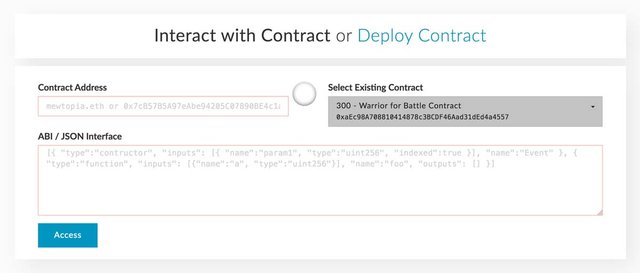Part one and two of this blockchain series should have helped you understanding the theory behind the blockchain and provided you with links which showed how to build a small sample application. The only thing left now are real applications built on the blockchain and therefore this last part focuses on already existing projects or project ideas that I came across and that caught my interest.

Existing blockchain applications
Hopefully the tutorials could give you at least a feeling of alternative applications for the Ethereum blockchain apart from cryptocurrency. A lot of interesting projects are already out there, finished ones as well as those that are still in progress and a few that yet only exist as ideas in some clever heads. It's worth taking a look and getting some inspiration. Ethercasts provides a very comprehensive project overview, but there are probably more out there.The first project I want to talk about is MyEtherWallet. It is not an example that shows the innovative potential of the blockchain but what it does is just as important: it makes the Ethereum blockchain accessible. Even though the Ethereum Wallet (as one example) shields the user from a lot of technical details, the MyEtherWallet goes a step further and additionally shields the user's computer from all the computational work of running a node and establishing and keeping a connection to the network. Their service is free and seems to be fairly safe.

A lot of people appear to be inspired by the free spirit of the blockchain and want to use the technology to empower people to donate or lend their money to others without having to pay a high fee to central institutions. One of those applications is the project Trustlines Network. Their goal is to create an application that enables people to give out loans to others, to easily make crosscurrency payments and to trade cryptocurrencies. All possible with "people powered money". The vision is to create a network where people are connected through trustlines. Such a connection is only established between members that know each other in real life and trust each other with financial matters. This should guarantee the reliability of the system. More details of the project can be found in their whitepaper.
Of course there are many more amazing applications out there, but this is just not the place to cover them all. Have a look and browse through the projects, that will give you a good idea about the nature of possible applications.
Application areas
Which brings us to a more general view of the application areas of blockchain solutions. The book "Bitcoin, Blockchain und Kryptoassets: Eine umfassende Einführung" mentions the following areas among others: proof-of-existence, integrity, authentication, smart property and smart contracts [1].
A proof-of-existence through the blockchain would work as a sort of patent. If an idea is written down as a white paper and inserted into the blockchain, it can fulfill the function of a patent. Since the blockchain cannot be changed and never forgets a record, it proofs the existence of the idea at a certain point of time. Anyone who claims they had the same idea earlier, can be proofed otherwise by the blockchain.
The blockchain could also function as a demonstration of integrity. This isof value for a news website that could publish its articles using a blockchain. Then the blockchain would work as a verification that the article has gone online at the specified time and has not been edited without notifying the users.
A combined example for proof-of-existence, integrity and additionally also authenticity is a blockchain diploma. Instead of having to carry around your physical master's degree and organize verified copies of it for each new employer, the diploma could be saved on a blockchain. It would proof the integrity of the candidate, verify the given information and - since it was published by the university - show its authenticity.
Moreover, the blockchain can be a place for smart properties like for example a car. The physical object, of course, stays in the real world but the access to it, the key, can be traded in digital form. This key can also be seen as a proof of purchase which leads to the last application category: the smart contracts. All kinds of physical contracts have the potential to be represented on the blockchain, this ranges from purchasing contracts to loans.
This brief presentation of applications and application areas demonstrated the potential of the blockchain technology beyond cryptocurrencies. Such a new technologies is always exciting because there are so many applications out there that have yet to be invented. I believe that the blockchain can be a platform for much more influential applications than just online casinos (unfortunately you can find a lot of those shown on Ethercasts) and I hope that we are going to see some more amazing ones in the next years.
[1] Berentsen, Aleksander and Fabian Schär. "Bitcoin, Blockchain und Kryptoassets." 7 Nicht-monetäre Anwendungen. Norderstedt: BoD - Books on Demand, 2017. 277-297.
------
Thanks to Lisa for this awesome post on zauberware.com
hey folks ! Would love start a discussion or at least get a bit of feedback for our contribution ;)
Downvoting a post can decrease pending rewards and make it less visible. Common reasons:
Submit
Hi! I am a robot. I just upvoted you! I found similar content that readers might be interested in:
https://www.zauberware.com/en/articles/2017/part-3-blockchain-application-areas/
Downvoting a post can decrease pending rewards and make it less visible. Common reasons:
Submit
well done dear bot, you found my original post on our website ! How awesome are you ! What a great invention you are...
Downvoting a post can decrease pending rewards and make it less visible. Common reasons:
Submit